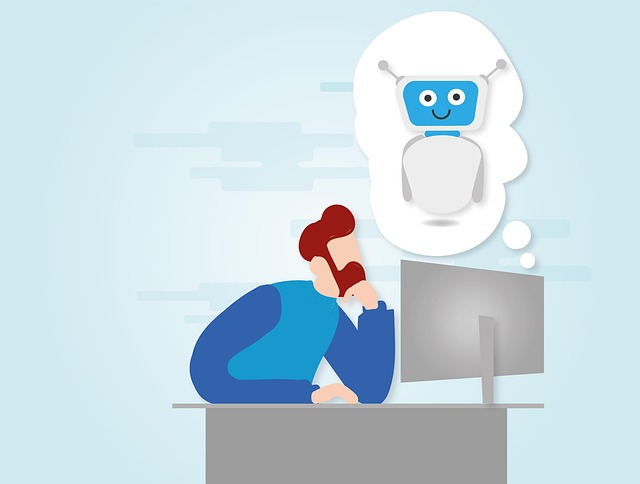Chatbots are transforming Shopify e-commerce by offering 24/7 customer support, personalized product guidance, and efficient order processing. These AI tools enhance user experiences, improve satisfaction, and boost sales. Both rule-based and AI-powered chatbots are available, with the latter leveraging NLP and machine learning for advanced interactions. Setting up a Shopify chatbot is simple, involving choosing a compatible platform, customizing responses, training via sample conversations, and thorough testing. To stay competitive, developers must incorporate best practices like NLP, contextual awareness, and multi-language support, while embracing future trends including emotion detection, sentiment analysis, AR assistance, and voice interfaces, always prioritizing data security.
“Unleash the power of automation with Shopify chatbots—the ultimate game changer for e-commerce. This comprehensive guide explores how these intelligent assistants are transforming online retail experiences. From understanding the basics to uncovering advanced strategies, we delve into the world of Shopify chatbots.
We’ll highlight the benefits of implementation, explore various chatbot types tailored for e-commerce, and provide a step-by-step setup guide. Discover best practices and future trends, ensuring your store stays ahead in the digital landscape. Boost engagement, enhance customer service, and drive sales with this cutting-edge technology.”
- Understanding Shopify Chatbots: An Overview
- Benefits of Implementing Chatbots on Shopify Stores
- Types of Chatbots for E-commerce: Options and Applications
- Setting Up a Shopify Chatbot: Step-by-Step Guide
- Best Practices and Future Trends in Shopify Chatbot Development
Understanding Shopify Chatbots: An Overview

Chatbots are transforming the way businesses interact with their customers on Shopify stores. These intelligent, automated tools mimic human conversation, providing instant support and personalized shopping experiences. By understanding customer needs and preferences, chatbots can offer product recommendations, answer frequently asked questions, and even process orders, enhancing overall store efficiency.
Shopify chatbots leverage artificial intelligence and natural language processing to learn from customer interactions, continually improving their performance. They are designed to handle a wide range of tasks, from simple query resolution to complex sales assistance. This technology promises increased customer satisfaction, reduced response times, and optimized conversion rates for online retailers.
Benefits of Implementing Chatbots on Shopify Stores

Implementing chatbots on Shopify stores offers a multitude of benefits that can significantly enhance both customer experience and business performance. These AI-driven tools serve as 24/7 virtual assistants, instantly responding to customer inquiries, providing product recommendations, and guiding them through the purchasing process. This proactive approach not only improves customer satisfaction but also boosts conversion rates by offering immediate support and personalized interactions.
Moreover, Shopify chatbots can streamline operational tasks, freeing up valuable time for store owners and their teams. They can handle repetitive queries, manage inventory updates, and even process basic orders, allowing human staff to focus on more complex issues. This efficiency gains translates into cost savings and improved overall business agility, enabling stores to better compete in the dynamic e-commerce landscape.
Types of Chatbots for E-commerce: Options and Applications

In the realm of e-commerce, chatbots have emerged as versatile tools, offering a range of options to enhance customer experiences and streamline operations. These virtual assistants can be categorized into several types, each with distinct applications. One common classification divides them into rule-based and AI-powered chatbots. Rule-based bots follow predefined rules and flows, often used for simple tasks like providing product recommendations or answering frequently asked questions (FAQs). Their simplicity makes them easy to set up and manage, ideal for small businesses looking for a straightforward solution.
On the other hand, AI-powered chatbots utilize machine learning and natural language processing (NLP) to engage in more complex conversations. These advanced bots can understand context, learn from user interactions, and even adapt their responses over time. They are capable of handling a wide array of tasks, from customer support and lead generation to sales assistance and post-purchase follow-ups. With their ability to provide personalized experiences, AI chatbots have become a game-changer in e-commerce, fostering better customer engagement and satisfaction.
Setting Up a Shopify Chatbot: Step-by-Step Guide

Setting up a Shopify chatbot is a straightforward process that can significantly enhance your online store’s customer engagement and sales. Here’s a step-by-step guide to get you started:
1. Choose a Reliable Platform: Select a reputable chatbot platform compatible with Shopify. Look for options offering seamless integration, advanced features, and good reviews from other Shopify users. Popular choices include many AI-driven chatbots known for their natural language processing capabilities.
2. Install the App: Log in to your Shopify admin panel and navigate to the “Apps” section. Search for the chosen chatbot platform and install it with a simple click. Follow any setup prompts, such as connecting your store’s data and configuring basic settings. Most platforms provide intuitive interfaces that guide you through the initial setup process.
3. Customize Chatbot Behavior: Define the chatbot’s personality, greetings, and responses to specific customer queries. Tailor these interactions to match your brand voice and customer support style. You can set up rules and triggers for when the chatbot should engage, such as greeting customers upon entering the store or providing product recommendations based on browsing behavior.
4. Train Your Chatbot: Many platforms use machine learning, allowing you to train the chatbot with sample conversations and provide feedback. The more interactions the chatbot has, the better it becomes at understanding customer needs and delivering accurate responses. Regularly review and update these training sessions as your store’s offerings evolve.
5. Test Thoroughly: Before launching, test the chatbot extensively. Simulate various customer scenarios and ensure the chatbot responds appropriately. Check for any bugs or unexpected behavior, and make adjustments as needed. A well-tested chatbot enhances user experience and builds trust with customers.
Best Practices and Future Trends in Shopify Chatbot Development

In the dynamic landscape of e-commerce, Shopify chatbots are rapidly evolving, driven by advancements in AI and user expectations. To stay ahead, developers must embrace best practices such as focusing on natural language processing (NLP) for seamless human-machine interaction, ensuring contextual awareness to provide personalized responses, and integrating multi-language support to cater to diverse customer bases. Additionally, leveraging machine learning algorithms enables chatbots to learn from interactions, improving accuracy over time.
Looking ahead, future trends in Shopify chatbot development hint at enhanced conversational AI, incorporating elements like emotion detection and sentiment analysis for more empathetic user engagement. The integration of augmented reality (AR) for visual assistance and the rise of voice-enabled interfaces will also shape customer interactions. Developers should anticipate these shifts, staying agile to capitalize on emerging technologies while ensuring data security and privacy in an increasingly connected digital world.
Shopify chatbots are transforming the way e-commerce businesses interact with their customers. By automating customer support, providing 24/7 availability, and offering personalized product recommendations, chatbots enhance user experience and drive sales. As technology evolves, we can expect advanced natural language processing and integration with AI to make Shopify chatbots even smarter and more effective. Embracing these trends will help retailers stay competitive in the dynamic digital landscape.
